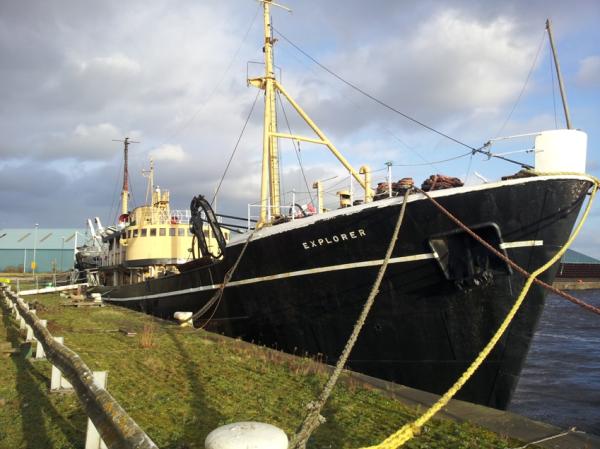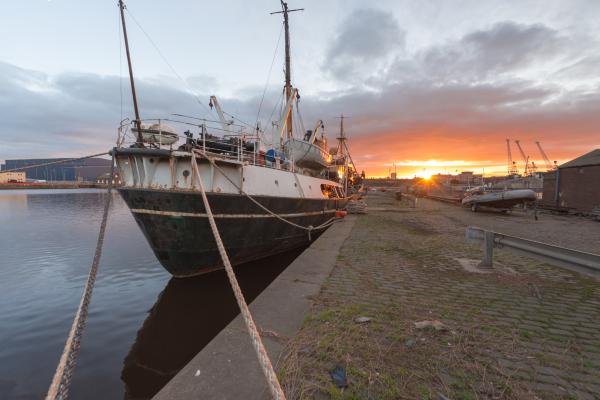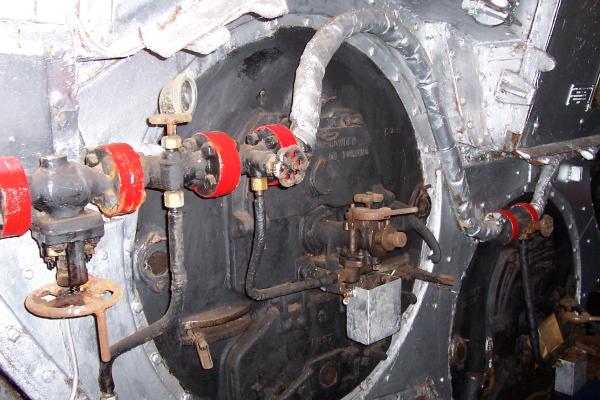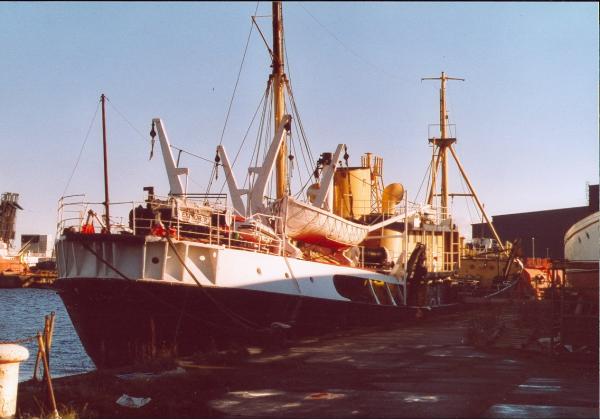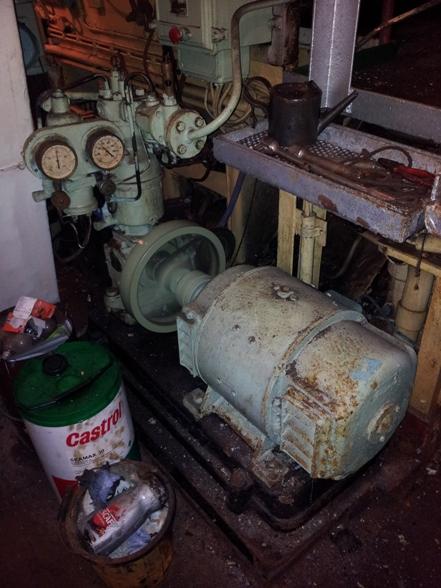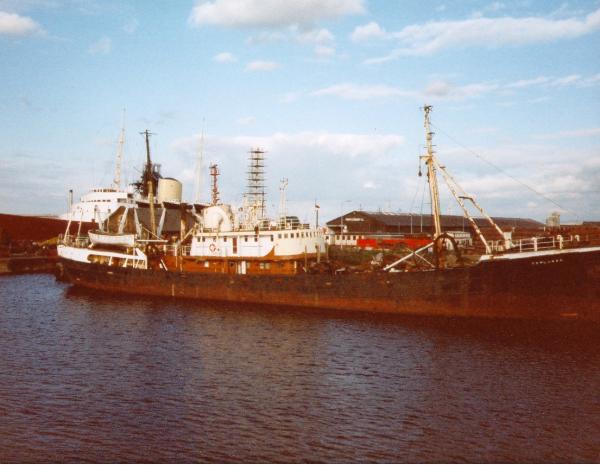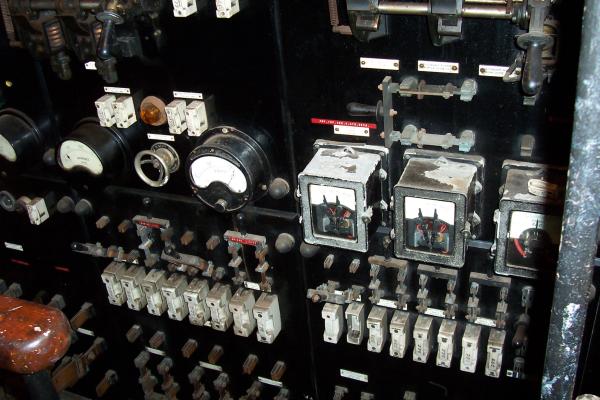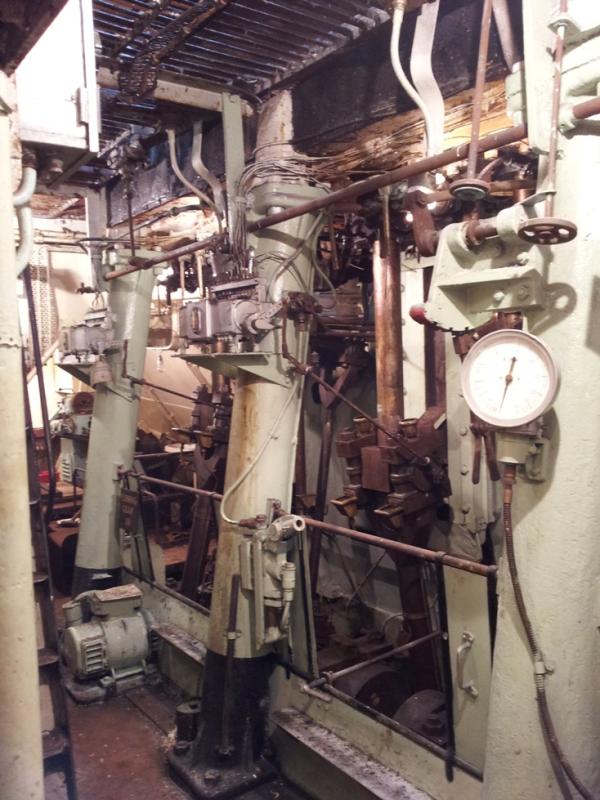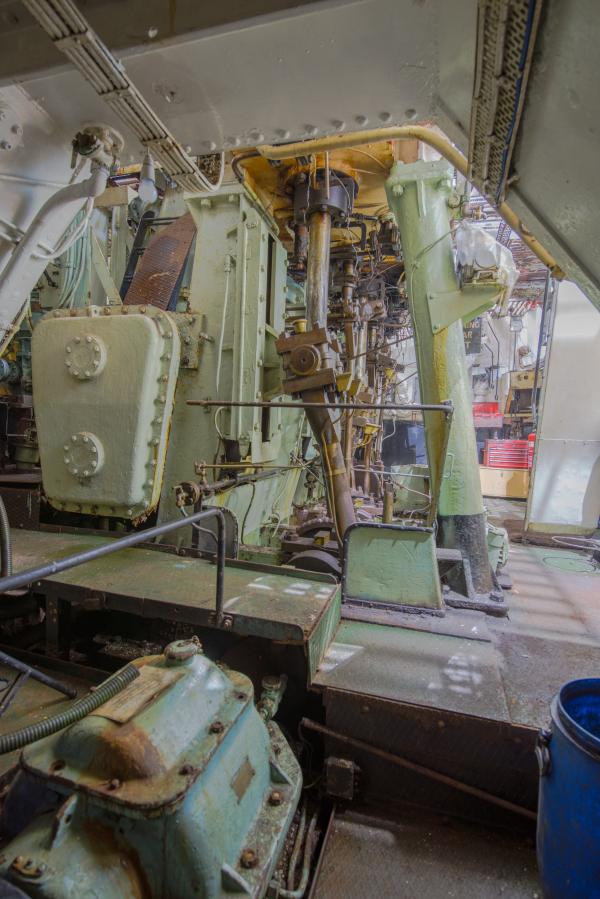
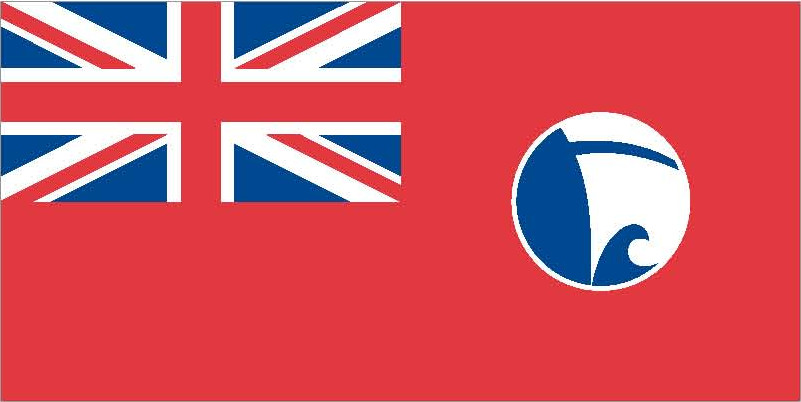

Details
Construction
Dimensions
History
Built in 1955 by Alexander Hall & Co.Ltd, with a riveted steel hull and a triple expansion engine by the same firm, EXPLORER was designed as a Fisheries Research Steamer for the Department of Agriculture and Fisheries for Scotland. She has the lines of a deep sea trawler and is believed to be the first research ship to be fitted with an onboard computer. Dr John H Steele conducted research onboard the Explorer and eventually became the Director of Woods Hole Oceanographic Institute in America. Professor Bob Kabata,a highly decorated Polish war hero and expert of marine parasites carried out a large amount of research while onboard.
She was withdrawn from service in 1984 and sold to breakers from whom she was rescued by Aberdeen City Council for restoration. She lay dormant for many years as the Council tried unsuccessfully to find her a berth adjacent to the City Maritime Museum.
In 1994 the Council proposed she should be scrapped but a local group formed a Preservation Society and she was saved once again. Under the auspices of her new owners she was moved to Leith for restoration work. An eviction order was served by the Forth Ports Authority in 2000, but a reprieve was granted and the vessel remains at Leith.
In March 2019, the SS Explorer Preservation Society was awarded a £10,000 Heritage Lottery Fund grant to officially set up governance of the organisation with the aim of restoring the vessel with as many original features as possible.
In April 2023, the Society was awarded a £20,000 grant from The Pilgrim Trust to support the development of a Conservation Management Plan for the vessel.
Significance
1. What is the vessel’s ability to demonstrate history in her physical fabric?
Evidence for designs, functions, techniques, processes, styles, customs and habits or uses and associations in relation to events and people. How early, intact or rare these features are may impact on significance.
SS EXPLORER was designed by the Scottish Home Department as a research vessel. Her riveted steel hull was given a reinforced bow to help her cope with the harsh North seas where she was destined to operate. She retains a high degree of original fabric in terms of layout, fittings and fixtures. While some material has been lost through vandalism, collision and damage, most of her structure remains original and a large proportion of the fixtures and fittings still exist, particularly within the accommodation. Her triple expansion engine was the last marine steam engine built in Scotland and the DC electrical systems were uniquely designed to power the scientific apparatus as well as the normal day to day electrics of a working trawler. The engine and boiler rooms are almost entirely intact, along with ancillary equipment, fixtures and fittings. There is some collision damage to the port quarter, with wear and tear to the fixtures and fittings of the below deck accommodation, and some cabins are noticeably more sparsely fitted out than others. However, the overall condition and level of completeness of the below deck accommodation is good. The aluminium deckhouse incorporates the wheelhouse, sick bay and laboratories from which onboard scientists would conduct their research. Many deck fittings including steam winches and fishing equipment (winch, derrick, gallows) survive, although they are significantly corroded and in need of conservation. There has been loss of some deck fittings and most of the bridge, making the layout of the decks and internal superstructure less authentic than it could be. The loss of the stern trawl davits and the port lifeboat has removed some of the original fixtures from the boat deck and changed the overall layout slightly. The removal of the original wooden deck planking from the wheelhouse deck has similarly reduced the overall authenticity of this space but was necessary to allow the deck to be sealed against water ingress to the compartments below.
2. What are the vessel’s associational links for which there is no physical evidence?
Associations with people or places. Off-ship research.
SS EXPLORER has strong associations with Aberdeen where she was one of the last vessels to be completed by the famous shipbuilding firm of Alexander Hall & Co. before it was bought by Hall, Russell & Co. Her port of registry was Leith which she visited multiple times during her working life, with crew changes, equipment deliveries and revictualing all completed there. She retains a strong historical connection with Leith Docks and its surviving historic structures. Launched by Lady Rachel Stuart, wife of the Secretary of State for Scotland, EXPLORER served as one of Scotland’s two ocean-going research vessels involved in advancing the development of fishing technology, whilst carrying out important hydrographic and hydrobiological survey work to further understanding of the marine environment and its dynamics. She was at the forefront of marine science for much of her operational life and was one of the first ships to go to sea with a computer which, at the time it was fitted, was one of only three within the whole city of Aberdeen. Alongside RSS DISCOVERY in Dundee and the material from the HMS CHALLENGER mission held by National Museums Scotland, SS EXPLORER provides a third aspect to Scotland’s historic role in marine science within the Forth and Tay estuaries. Many young marine scientists gained early career experience on SS EXPLORER and well-known UK scientists who worked onboard include Basil Brockett Parrish, Alastair Duncan McIntyre, Sir Cyril Edward Lucas and pioneering women in offshore science such as Dr Aneea Reid. SS EXPLORER has international significance from her voyages across the North Atlantic, with regular stops including Stavanger (Norway), Esbjerg (Denmark) and Klaksvig, Thorshavn or Trangisvaag (Faroes). She drew in scientists from around the world, some of whom went on to become eminent within their field, including Professor Zbigniew Bob Kabata, an award-winning Polish marine scientist whose studies in fish parasitology were ground-breaking and Professor John H Steele who was a hydrographic specialist onboard before eventually becoming director of the Wood Holes Oceanographic Institute in Massachusetts, USA. Research undertaken by SS EXPLORER has proved fundamental for understanding the global and regional climate, with the ship regularly participating in internationally commissioned survey work and being instrumental in introducing changes in fishing technology. In the late 1950s and early 1960, SS EXPLORER was one of a small group of vessels to be awarded an “Excellent” award from the Meteorological Office for the standard of the logs kept by her desk officers. She is referenced in various publications and has featured in a Marine Laboratory film entitled “Explorer Investigates”, as well as an episode of BBC’s “Coast”. The outer form of the ship is that of a deep-sea trawler, of which there are other surviving examples in various states of preservation. However, the steam engine and oil boiler mark her as unique in comparison to other surviving sidewinder trawlers of this period, which were all powered by diesel engines. SS EXPLORER was recorded on the National Register of Historic Vessels in 2005.
3. How does the vessel’s shape or form combine and contribute to her function?
Overall aesthetic impact of the vessel, her lines, material she was built from and her setting. Does she remain in her working environment?
SS EXPLORER was built with dual functionality having the lines of a deep-sea trawler, set up for side trawling, but equipped as a research vessel to conduct scientific experiments in the North Sea and Northeast Atlantic. Typical of side trawlers, her lines descend gently from her cruiser stern to her waist, where the trawls were shot and hauled, then rise to her prow which was high enough to cope with heavy seas in the North Atlantic. The mix of the two functions created the unique layout of the ship, with some elements of the pure sidewinder trawlers from the 1950s and 1960s removed or adapted to allow for the scientific work that was to be completed. The profile of the ship remains almost exactly as built. The original layout as a floating scientific laboratory, combined with a functioning fishing trawler is retained and allows visitors to move around as the crew and scientists did during its use. Some adaptations during her working life included a minor extension to the aft deck to facilitate scientific work with the stern winch; the strengthening of her main mast support with braces to handle heavier fishing equipment; the fitting of a Samson post and braces to the aft of the deckhouse for lifting equipment; and the removal of the enclosing sides of the bridge wings and altering the forward crew cabin to make a passage for the crew to use in bad weather to reach the mess room. Notably one of the cabins was divided to accommodate women scientists on board. Today, EXPLORER is in static preservation within Leith Docks, an area with strong links to her working life, but which currently offers limited public access.
Source: vessel custodian, Feb 2025
Key dates
-
21/06/1955
Vessel lauched
-
1988
Scheduled for preservation by Aberdeen City Council
-
1984
Withdrawn from service
-
1/1995
Purchased by ss Explorer Preservation Society
-
Jan 1995
Sold to Shipbreakers
-
2020
Received Flagship award of £250, for being NHS-UK regional flagship Scotland East 2020
Grants
-
April 2023
Awarded £20,000 grant from The Pilgrim Trust to support the development of a Conservation Management Plan for the vessel.
-
2020
Received Flagship award of £250, for being NHS-UK regional flagship 2020
-
March 2019
The SS Explorer Preservation Society was awarded a £10,000 heritage Lottery Fund to officially set up governance of the organisation with the aim of restoring the vessel with as many original features as possible.
Sources
Steamboat Register: An illustrated Register of surviving steam vessels in the British Isles, Steam Boat Association of Great Britain, Edition 6, May 1994
Brouwer, Norman J, International Register of Historic Ships, Anthony Nelson, pp149, Edition 2, 1993
Muir, Ian, SEVEN LIVES LEFT! The Story of the SS Explorer
Own this vessel?
If you are the owner of this vessel and would like to provide more details or updated information, please contact info@nationalhistoricships.org.uk

